NEW HOPE, PA – Moody’s Investor Service recently reaffirmed its A1 rating for the Delaware River Joint Toll Bridge Commission’s revenue bonds while revising the agency’s financial outlook to stable instead of negative, the Commission announced today.
“The stabilization of the rating outlook was prompted by the progress of the Commission’s Scudder Falls Bridge replacement construction, increasing our confidence that DRJTBC can finish the project largely on time and on budget without materially impairing its projected debt service coverage ratios or liquidity position,” said Kathrin Heitmann, Moody’s lead analyst on Commission bond offerings, in a Friday statement.
In explaining its rationale behind its ratings decision, Moody’s cited the expectation of stable traffic volumes supported by the Commission’s mature service area. Moody’s analysis went on to explain that it does not anticipate any toll rate increases in the near term and the Commission benefits from independent rate-setting ability and toll rates are low, which provides economic flexibility if it were to become necessary to raise tolls.
Moody’s explained that its stable outlook for the Commission reflects the rating agency’s expectation that the Commission will complete its Scudder Falls bridge project on time and on budget by the end of 2021.
Moody’s cited other factors that figured into its evaluation. Among these are:
- Long history of stable traffic volumes
- Progress in funding its post-retirement benefits liability of retirees
- Closed flow of funds and no funding of non-bridge-related development with Commission funds
- Good management and governance practices
The Commission owns and operates 20 bridges along the “whitewater” portion of Delaware River between New Jersey and Pennsylvania. The system currently consists of seven toll bridges and 13 non-toll bridges, two of which are pedestrian-only structures.
More than 139 million vehicular crossings were recorded at Commission bridges in 2018, with 63 percent of the traffic occurring at the toll bridges. The Commission collected more than $129 million in tolls in 2018 (unaudited figure; final audited figure expected by July).
The busiest of the Commission’s non-toll bridges – the functionally obsolete, 59-year-old Scudder Falls Bridge – is undergoing replacement as a new dual-span toll bridge. The first span of the new bridge is on track to open to traffic this summer, with tolls being collected in the Pennsylvania-bound direction through an all-electronic tolling gantry outfitted with E-ZPass transponder readers and high-resolution cameras for Toll-by-Plate invoice billing via U.S. Mail.
The Scudder Falls Bridge Replacement Project involves a heavily commuted 4.4-mile portion of the I-295 (old I-95) corridor extending from the Route 332/Yardley-Newtown Road interchange (Exit 8) in Bucks County, PA and the Bear Tavern Road/County Route 579 interchange (Exit 75) in Mercer County, NJ. The congestion-prone highway segment is a choke point for job-commuter traffic between New Jersey and Pennsylvania.
More information on the project is available at www.scudderfallsbridge.com.
About the Commission
The Delaware River Joint Toll Bridge Commission was formed by the Commonwealth of Pennsylvania and the State of New Jersey in 1934. It operates seven toll bridges and 13 toll-supported bridges, two of which are pedestrian-only spans. The Commission is a self-supporting public-service agency that receives neither federal nor state tax dollars to finance its projects or operations. Funding for the operations, maintenance and upkeep of its bridges and related transportation facilities is solely derived from revenues collected at its toll bridges. The Commission’s jurisdiction extends along the Delaware River from the Philadelphia-Bucks County line north to the New Jersey/New York border. The bridges carried more than 139.2 million cars and trucks in 2018. For more information about the Commission and its various initiatives to deliver safer and more convenient bridge travel for its customers, please see: www.drjtbc.org.
